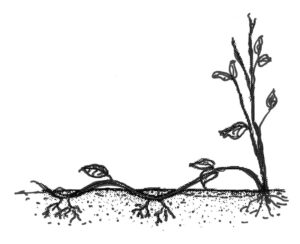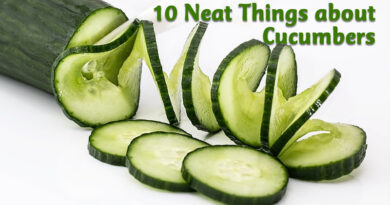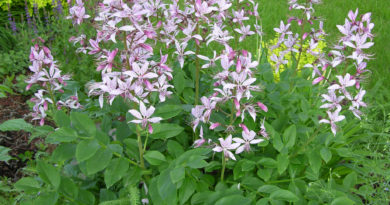Layering Vines
Layering involves pinning the nodes of a young, flexible vine stem to some nicely prepared earth and letting the vine take root. When the root is well established, cut it away from its mother and you have a lovely new plant. This method works well not just for clematis but also for plants producing vine-like growth including wisteria (try the new hardy type), clematis and grapes. Ivies and Virginia creeper are easy to propagate this way.

Loosen the earth along the area where you wish to encourage new growth. Add a little peat moss if the soil is hard or especially sandy or clay based. Make a little hole about three or four inches deep.
Take a healthy, young tendril, and peg it to the ground along a wall or a fence. Use anything handy to do the pegging, even a heavy stone, as long as it keeps a node of the vine securely fastened to the ground. The vine should be bent or nicked at the point of pegging to encourage growth of roots.
Eventually, the vine will send down roots at this point. You can assist this by adding a little rooting hormone to the nodes that will contact the earth.
Keep the soil moist at the contact points.
When you can see that the nodes have taken root, you can cut the new plantling away from the mother plant. Then it is just a matter of nurturing your new vine and giving it support to climb upwards.
You can increase the vine even more by pegging several of the nodes at locations along the stem. This is called serpentine layering. Make sure there is at least one leaf above the ground between each pegging.
You can also increase clematis by taking cuttings of woody vines and rooting them in wet sand with a bit of rooting compound. Cuttings taken in spring when the vine is actively growing will increase your success rate. It takes several weeks for the cuttings to take root.




